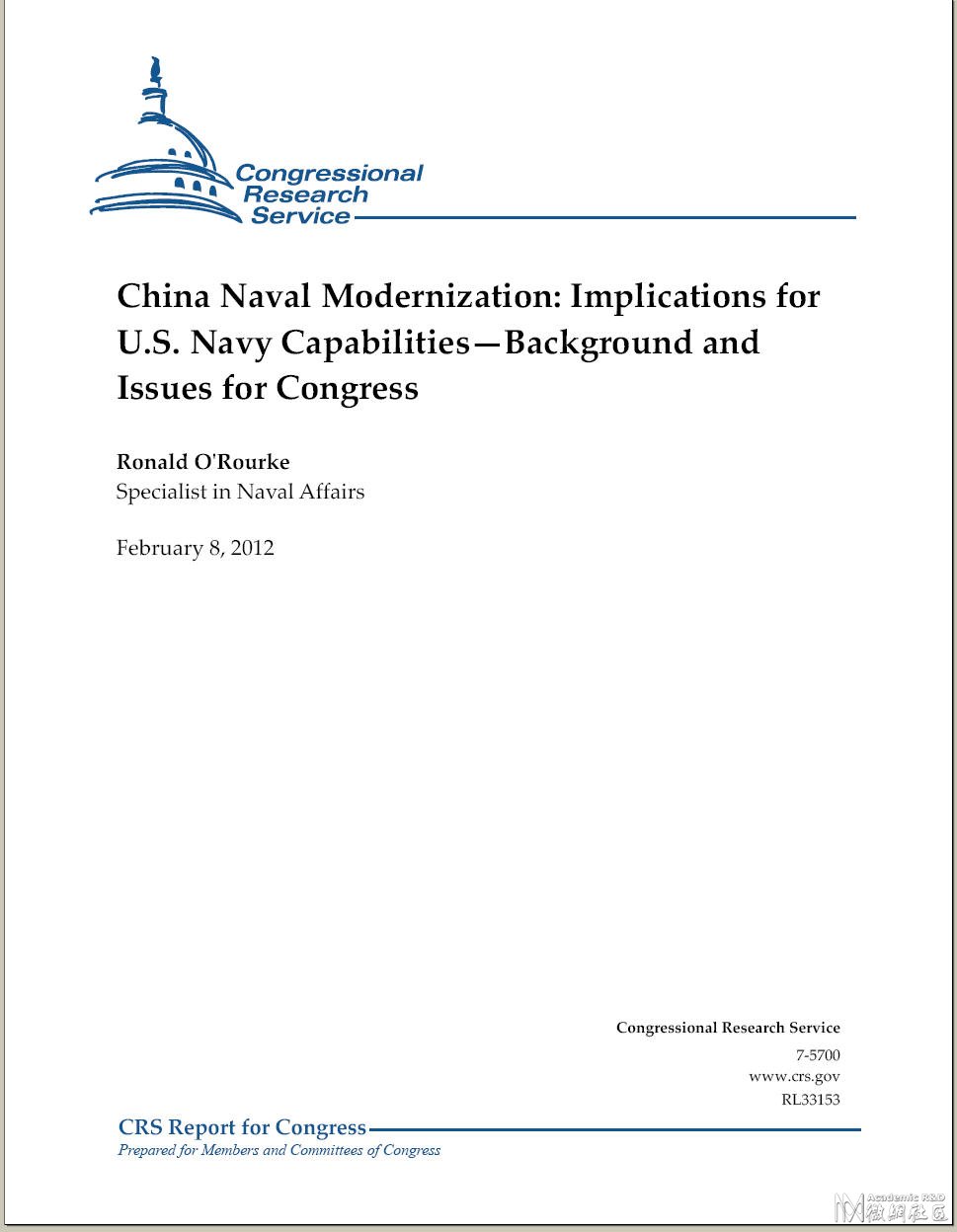本帖最后由 post2007 于 2013-4-7 22:30 编辑
美国国会报告:中国海军现代化对美国海军能力的意义 - 背景与问题
China Naval Modernization- Implications for US Navy Capabilities - Background and Issues for Congress:

Summary
The question of how the United States should respond to China’s military modernization effort,
including its naval modernization effort, has emerged as a key issue in U.S. defense planning. The
question is of particular importance to the U.S. Navy, because many U.S. military programs for
countering improved Chinese military forces would fall within the Navy’s budget.
Two DOD strategy and budget documents released in January 2012 state that U.S. military
strategy will place a renewed increased emphasis on the Asia-Pacific region, and that as a result,
there will be a renewed emphasis on air and naval forces in DOD plans. Administration officials
have stated that notwithstanding reductions in planned levels of U.S. defense spending, the U.S.
military presence in the Asia-Pacific region will be maintained and strengthened.
Decisions that Congress and the executive branch make regarding U.S. Navy programs for
countering improved Chinese maritime military capabilities could affect the likelihood or
possible outcome of a potential U.S.-Chinese military conflict in the Pacific over Taiwan or some
other issue. Some observers consider such a conflict to be very unlikely, in part because of
significant U.S.-Chinese economic linkages and the tremendous damage that such a conflict could
cause on both sides. In the absence of such a conflict, however, the U.S.-Chinese military balance
in the Pacific could nevertheless influence day-to-day choices made by other Pacific countries,
including choices on whether to align their policies more closely with China or the United States.
In this sense, decisions that Congress and the executive branch make regarding U.S. Navy
programs for countering improved Chinese maritime military forces could influence the political
evolution of the Pacific, which in turn could affect the ability of the United States to pursue goals
relating to various policy issues, both in the Pacific and elsewhere.
China’s naval modernization effort, which began in the 1990s, encompasses a broad array of
weapon acquisition programs, including anti-ship ballistic missiles (ASBMs), submarines, and
surface ships. China’s naval modernization effort also includes reforms and improvements in
maintenance and logistics, naval doctrine, personnel quality, education, training, and exercises.
Observers believe that the near-term focus of China’s military modernization effort has been to
develop military options for addressing the situation with Taiwan. Consistent with this goal,
observers believe that China wants its military to be capable of acting as a so-called anti-access
force—a force that can deter U.S. intervention in a conflict involving Taiwan, or failing that,
delay the arrival or reduce the effectiveness of intervening U.S. naval and air forces. Observers
believe that China’s military modernization effort, including its naval modernization effort, is
increasingly oriented toward pursuing additional goals, such as asserting or defending China’s
territorial claims in the South China Sea and East China Sea; enforcing China’s view—a minority
but growing view among world nations—that it has the right to regulate foreign military activities
in its 200-mile maritime exclusive economic zone (EEZ); protecting China’s sea lines of
communications; protecting and evacuating Chinese nationals in foreign countries; displacing
U.S. influence in the Pacific; and asserting China’s status as a major world power.
Potential oversight issues for Congress include the following: whether the U.S. Navy in coming
years will be large enough to adequately counter improved Chinese maritime anti-access forces
while also adequately performing other missions of interest to U.S. policymakers around the
world; the Navy’s ability to counter Chinese ASBMs and submarines; and whether the Navy, in
response to China’s maritime anti-access capabilities, should shift over time to a more distributed
fleet architecture.

